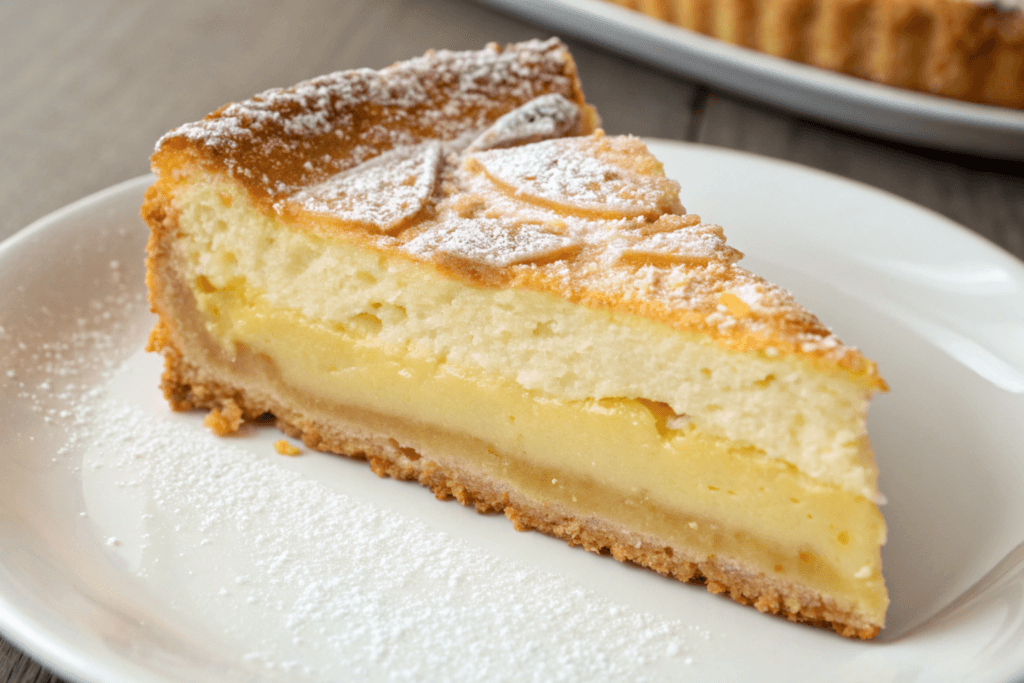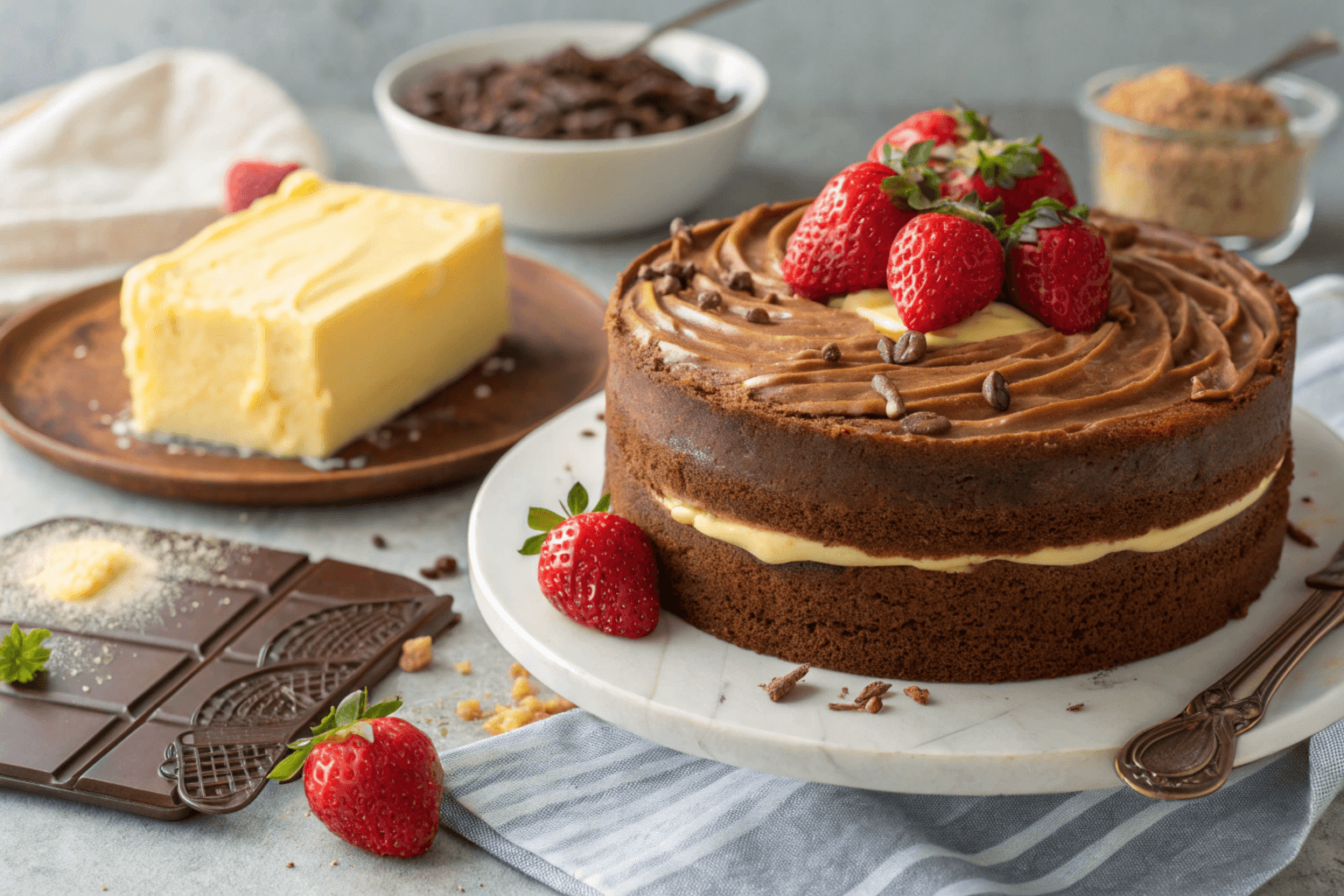Baking is as much a science as it is an art, and the combination of ingredients plays a significant role in determining the final outcome. One common question among bakers is: Can I use both butter and oil in a cake? The short answer is yes, and combining these two fats can offer the best of both worlds. Butter brings rich flavor, while oil contributes moisture, making your cake both delicious and tender. In this comprehensive guide, we’ll explore why using both butter and oil in cake recipes works, the science behind their effects, and how to achieve the perfect balance for your next bake.
Table of Contents
Why Use Both Butter and Oil in Cake
Butter and oil are two of the most common fats used in baking, but they each have distinct characteristics. Using both in a single recipe can allow you to maximize their benefits, creating a cake that is flavorful, moist, and structurally sound.
1. Butter for Flavor
Butter is renowned for its rich, creamy flavor that elevates cakes to indulgent treats. It’s especially desirable in recipes where the buttery taste is meant to shine, such as pound cakes or vanilla cakes. When creamed with sugar, butter also creates air pockets that contribute to a light and fluffy texture.
2. Oil for Moisture
Oil, on the other hand, is superior when it comes to retaining moisture. Cakes made with oil tend to stay soft and tender for longer periods, even after refrigeration. Oil also has a neutral flavor, making it an excellent choice for recipes where you want other ingredients, such as chocolate or spices, to stand out.
3. The Combination Effect
By using both butter and oil in a cake recipe, you can achieve a balance between flavor and moisture. The butter provides a rich taste, while the oil ensures the cake remains moist and tender. This combination is particularly effective in layered cakes, carrot cakes, and chocolate cakes, where both qualities are essential.
The Science of Butter and Oil in Cake Baking
To understand why combining butter and oil works so well, it helps to delve into the science of baking. Fats like butter and oil play critical roles in the texture, flavor, and overall success of a cake.
1. Fat’s Role in Cake Structure
Fats coat the flour particles in the batter, preventing excessive gluten formation. This ensures the cake has a tender crumb rather than a chewy texture. Butter’s solid state at room temperature helps create structure, while oil’s liquid consistency contributes to softness.
2. Emulsification
When fats are mixed with liquid ingredients like milk or eggs, they help emulsify the batter, ensuring a smooth and uniform consistency. This is crucial for cakes that require an even rise and consistent texture.
3. Heat Behavior
Butter melts during baking, releasing water and fat. This creates steam, which helps the cake rise. Oil, being entirely fat, does not contribute to steam but provides a consistent texture throughout the baking process.

How to Use Both Butter and Oil in a Cake Recipe
If you’re ready to experiment with using both butter and oil in a cake, here are some practical tips to help you get started:
1. Determine the Ratio
A common ratio is to use equal parts butter and oil. For example, if a recipe calls for 1 cup of butter, you can use ½ cup of butter and ½ cup of oil instead. Adjust this ratio based on your preference for flavor versus moisture.
2. Choose the Right Oil
Neutral oils like canola, vegetable, or grapeseed oil work best for cakes. These oils won’t compete with the flavors of other ingredients. For cakes where you want a hint of flavor, like carrot or spice cakes, you can use coconut or olive oil.
3. Cream Butter and Sugar First
When using both fats, start by creaming the butter and sugar together. This step helps incorporate air into the batter, ensuring a fluffy texture. Add the oil later with the wet ingredients.
4. Adjust Liquid Ingredients
Because oil is entirely fat and butter contains water, you may need to slightly reduce the liquid ingredients in the recipe to maintain the right consistency.
| Step | Tip |
|---|---|
| Choose the right ratio | Start with equal parts butter and oil. |
| Cream butter first | Incorporate air by creaming butter with sugar. |
| Adjust liquids | Reduce other liquids slightly if needed. |
Benefits of Using Butter and Oil Together in Baking
Combining butter and oil in a cake recipe offers several advantages that can enhance flavor, texture, and freshness. This technique helps achieve the perfect balance between richness and moisture, ensuring that every slice is delicious, soft, and long-lasting. Here’s why using both fats together can elevate your baking.
1. Better Flavor and Moisture: The Perfect Balance
Butter is known for its rich, creamy taste, while oil provides essential moisture that keeps cakes soft and tender. When combined, these two fats work together to create a cake that is both flavorful and perfectly moist. This method is particularly beneficial for cakes that need to be indulgent yet light, such as chocolate cakes, carrot cakes, or layer cakes. By using both butter and oil, you enhance the taste while ensuring that the cake stays moist for days.
2. Improved Texture: Soft Yet Stable Crumb
Using only butter in a cake can sometimes result in a dense or dry texture, while relying solely on oil may lead to a cake that feels too soft or greasy. The combination of both fats creates an ideal crumb structure—one that is soft, tender, and holds its shape without becoming dry or overly oily. This is especially useful for cakes that need to support multiple layers, fillings, or frostings, as it ensures stability without sacrificing softness.
3. Longer Shelf Life: Keeping Cakes Fresh for Days
One of the biggest advantages of using oil in baking is its ability to retain moisture over time. Cakes made with oil tend to stay fresher for longer, preventing them from drying out even after a few days. By incorporating both butter and oil, you get the best of both worlds—the deep flavor of butter combined with the long-lasting softness of oil. This makes it an excellent choice for cakes that need to be prepared in advance or stored for a few days before serving..
1. Best Cakes for a Butter and Oil Combination
Some cakes require both richness and moisture, making the butter-and-oil combination ideal. These cakes benefit from the deep flavor of butter while maintaining softness and longevity thanks to the oil.
✔ Chocolate Cakes: The buttery richness enhances the cocoa, while oil ensures the cake stays soft, moist, and tender. This is especially important for fudgy or layered chocolate cakes that need a melt-in-your-mouth texture.
✔ Carrot Cakes: The natural moisture from shredded carrots pairs well with oil, keeping the cake from becoming dry. However, adding butter enhances the flavor, making the cake richer and more indulgent.
✔ Layer Cakes: A mix of fats creates sturdy yet soft layers, preventing the cake from becoming too dry or too dense. This is particularly helpful for cakes that require stacking and frosting, as the oil keeps the crumb tender, while butter contributes structure and flavor.
2. When to Use One Type of Fat
Certain cakes are best when using either butter or oil exclusively, as combining the two might alter the texture and desired characteristics.
✔ Sponge Cakes: These cakes rely on aeration from butter or eggs to create a light and airy crumb. Using oil could weigh the batter down, preventing the fluffy structure that defines a traditional sponge cake.
✔ Pound Cakes: Since pound cakes are known for their rich, buttery flavor, adding oil would dilute the signature taste. These cakes also don’t require extra moisture, as their dense yet tender texture comes from a higher butter ratio.
FAQs About Using Butter and Oil in Cake
1. Can I use both butter and oil in any cake recipe?
Yes, but it’s best to experiment with cakes that balance moisture and flavor, like chocolate or carrot cakes. Delicate cakes like sponges may not benefit from the combination.
2. Does using both butter and oil affect baking time?
Not significantly. However, cakes with oil may bake slightly faster, so monitor closely near the end of the baking time.
3. Should I adjust other ingredients when using both fats?
Yes, slightly reduce the liquid ingredients to account for oil’s 100% fat content versus butter’s water content.
4. Which oil works best for cakes?
Neutral oils like canola or vegetable oil are ideal. For a subtle flavor twist, try coconut or grapeseed oil.
5. Does using both butter and oil make a cake healthier?
Not necessarily. While oil provides healthier unsaturated fats, the combination is more about enhancing flavor and texture than reducing calories.
Conclusion: The Perfect Balance of Butter and Oil in Baking
Using both butter and oil in a cake recipe is a brilliant technique that allows you to achieve the best of both worlds—rich, buttery flavor and long-lasting moisture. While butter adds depth, aroma, and a luxurious taste, oil keeps the cake soft, tender, and fresh for days, ensuring that every slice remains just as delicious as when it first came out of the oven.
This combination works beautifully in a variety of cakes, from a decadent chocolate cake to a classic vanilla sponge or a moist carrot cake. By adjusting the ratio of butter to oil, you can customize the texture and richness to suit your preference. Whether you prefer a light and fluffy crumb or a denser, more indulgent bite, this technique offers versatility and consistency in your baking.
Next time you bake, don’t hesitate to experiment with both fats. Choose the right neutral oil or flavored oil to complement your recipe, tweak the proportions to find your ideal balance, and enjoy the enhanced flavor and texture in every bite. Baking is all about creativity and discovery—and mastering the use of butter and oil together is a game-changing technique that will take your cakes to the next level. Try it once, and it just might become your new favorite baking secret!

